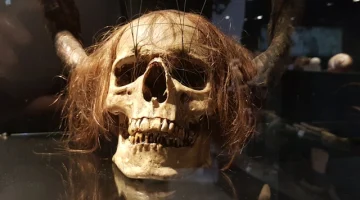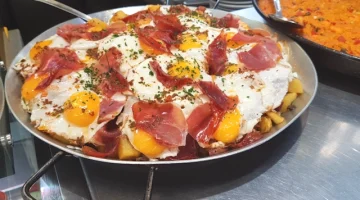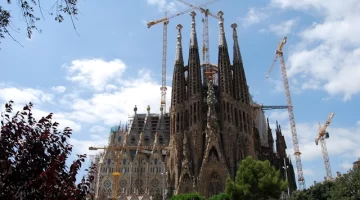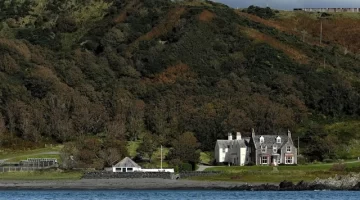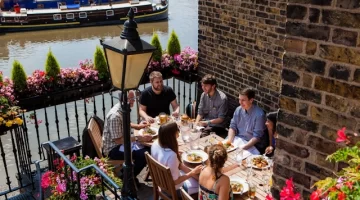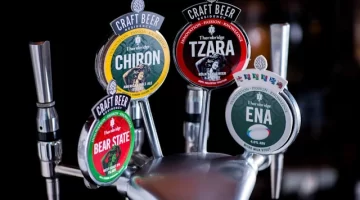Best Time to Visit Las Vegas
The Travel Pages suggests the best time to visit Las Vegas, Nevada, taking into account the weather, hotel prices and any special events going on in Sin City.

Best Time to Visit Las Vegas
Most visitors find Las Vegas appealing year-round, but knowing when to go can greatly improve your experience. You’ll want to balance comfortable weather, hotel prices, and exciting events to get the most from your trip. While summers can be extremely hot, often exceeding 100°F (38°C), the cooler months offer pleasant temperatures and fewer crowds.
Your choice of timing also affects hotel rates and event availability, making it important to plan carefully. This guide breaks down the weather, prices, and key happenings each month so you can decide the best time to visit Las Vegas for your unique travel needs.
Key Takeaways:
- Spring (March to May) and Fall (September to November) offer the most comfortable weather in Las Vegas, with mild temperatures and lower humidity, ideal for outdoor activities and sightseeing.
- Summer months (June to August) bring extreme heat, often exceeding 100°F (38°C), making it less suitable for outdoor adventures but great for enjoying indoor casinos, pools, and entertainment.
- Winter (December to February) is cooler, with temperatures ranging from the 40s to 60s°F (4–16°C), occasional chilly nights, and very low rainfall, making it a good season for budget travelers due to lower hotel prices.
- Special events like the Electric Daisy Carnival in May, the Life is Beautiful Festival in September, and New Year’s Eve celebrations in December can enhance the experience but may also increase crowd levels and hotel rates.
-
Hotel prices fluctuate throughout the year, with the most affordable rates typically during the hot summer months and mid-winter, while festivals and holidays drive prices higher.
Key Takeaways:
- Spring (March to May) and Fall (September to November) offer the most comfortable weather in Las Vegas, with mild temperatures and lower humidity, ideal for outdoor activities and sightseeing.
- Summer months (June to August) bring extreme heat, often exceeding 100°F (38°C), making it less suitable for outdoor adventures but great for enjoying indoor casinos, pools, and entertainment.
- Winter (December to February) is cooler, with temperatures ranging from the 40s to 60s°F (4–16°C), occasional chilly nights, and very low rainfall, making it a good season for budget travelers due to lower hotel prices.
- Special events like the Electric Daisy Carnival in May, the Life is Beautiful Festival in September, and New Year’s Eve celebrations in December can enhance the experience but may also increase crowd levels and hotel rates.
-
Hotel prices fluctuate throughout the year, with the most affordable rates typically during the hot summer months and mid-winter, while festivals and holidays drive prices higher.
Seasonal Splendor: The Climate of Las Vegas
Las Vegas boasts a desert climate defined by blazing summers and mild winters, making it a destination where weather can significantly shape your visit. The city experiences minimal rainfall, averaging less than 4 inches (100 mm) annually, with clear skies dominating most days. While daytime temperatures swing dramatically, especially between summer and winter, evenings often offer relief. This stark contrast impacts not just your comfort but also hotel prices and crowd sizes, influencing the overall vibe of your stay. Understanding these seasonal shifts helps you decide when to catch the city’s energy without the relentless heat or peak-season price surges.
The Searing Summers: What to Expect from June to August
Summer days in Las Vegas are hot to the extreme, with average highs soaring to between 104°F and 108°F (40°C to 42°C), while nights cool just enough to offer some respite, around 77°F (25°C). Rain is virtually nonexistent, and the relentless sun paints the Strip with that signature bright desert glow. Hotel prices tend to dip slightly as some visitors shy away from the heat, making summer an opportunity for budget-conscious travelers who can handle the scorch. Special events are fewer, but outdoor pool parties and nightlife remain attractively vibrant.

Mild and Manageable Falls: September to November Onset
Fall transitions you into much more agreeable temperatures, averaging 85°F (29°C) in September down to a comfortable 60°F (16°C) by November, with nearly zero rainfall. The nights begin to cool to a pleasant 57°F to 50°F (14°C to 10°C), creating perfect conditions for evening strolls and outdoor dining. Hotel rates start to climb again as demand picks up, supported by numerous events like the Life is Beautiful Festival in October and Veterans Day celebrations, adding cultural richness and energetic crowds without the oppressive heat.
Diving deeper into fall, you’ll notice the city’s energy revitalizing as temperatures moderate from the summer scorch. September kicks off with lingering warmth (highs around 89°F/32°C), ideal for poolside relaxation still, while October ushers in a festival season with Life is Beautiful attracting music and art lovers. By November, daytime highs dip into the low 60s°F (17°C), offering crisp, comfortable days with cool evenings perfect for exploring without the crowds of peak summer or holiday seasons. Hotel prices are moderate, giving you a chance to experience the city with favorable weather and fewer frenzied tourists, making this season particularly inviting for families and couples alike.

The Chill of Winter: December to February Insights
Winter in Las Vegas offers a stark contrast to the city’s famously scorching summers, with milder days and noticeably crisp nights. Daytime temperatures generally hover between 50°F and 60°F (10°C to 16°C), while nights can dip to near freezing. This season sees lower hotel prices, especially after the holiday rush, making winter a smart choice if you prefer fewer crowds and want to save on accommodations. Despite the chill, Vegas remains lively with plenty of indoor entertainment, perfect if you enjoy cooler weather without the harshness of snow.
Unpacking Winter Weather: Snowfall and Rainfall Statistics
Snowfall in Las Vegas is extremely rare but not impossible, with less than an inch generally recorded in the surrounding mountains rather than the Strip itself. Rainfall is modest but more prevalent than in summer, averaging about 0.5 inches (12.7 mm) per month during these months. You can expect roughly 6-8 days with some rain, so packing a light waterproof jacket is wise without worrying about heavy downpours.

Special Events that Heat Up the Cold Season
Winter brings some of the city’s most festive and high-energy events that brighten up the cooler days. From dazzling holiday light displays to major New Year’s celebrations, you can find plenty of reasons to bundle up and explore. Some events draw large crowds, so planning ahead for accommodations is advisable despite generally lower prices.
December hosts the Amazing Las Vegas Christmas Parade and the outstanding Winter in Venice festival at the Venetian, where you can experience themed ice skating and holiday markets. The New Year’s Eve fireworks on the Strip are renowned worldwide, pulling in visitors eager to ring in the year with spectacular displays and parties. In January, events like the National Finals Rodeo attract rodeo fans and provide a unique Western flair. February’s Chinese New Year celebrations in Chinatown add cultural vibrance with traditional performances and food fairs. Stability in hotel prices during most of this season, aside from these key event dates, gives you flexibility for booking stays.

The Bloom of Spring: March to May Highlights
Spring ushers in a refreshing transformation across Las Vegas, with temperatures rising from a mild 65°F (18°C) in March to a warm 85°F (29°C) by May. Rainfall remains minimal, below 0.3 inches (7.6 mm) monthly, keeping the skies mostly clear. Hotel prices start to climb from their winter lows but generally stay reasonable compared to summer peaks. This season balances comfortable weather and manageable crowds, making it an appealing time for families, couples, and solo travelers alike.
Weather Patterns and Tourist Influx: What Makes Spring Special
Spring delivers a blend of mild days and cooler evenings with average highs between 65°F and 85°F (18°C to 29°C), perfect for outdoor adventures and walking the Strip without extreme heat. Tourist numbers steadily increase, especially around spring break and major events, but staying midweek or early in the season helps you avoid the heaviest crowds. Expect pleasant evenings as lows dip to 45°F–60°F (7°C–16°C), ideal for alfresco dining or nighttime shows.

Festivals and Events that Draw Crowds
The spring calendar kicks off with the renowned NCAA Men’s Basketball Tournament events and wraps up with the electric Electric Daisy Carnival (EDC) in May, attracting tens of thousands to the city. Other highlights include the Las Vegas Film Festival and the popular Vegas Uncork’d food and wine event, making spring the time to combine entertainment with cooler weather. Hotel rates fluctuate accordingly but often remain more affordable than summer.
Springtime’s festival spectrum significantly shapes visitor patterns, especially with the Electric Daisy Carnival, which brings one of the largest electronic dance music gatherings in the world, typically in mid-May. This event alone pushes hotel prices higher, with rooms often booking months in advance. Meanwhile, the NCAA March Madness games lure sports fans eager to witness thrilling basketball action. The Las Vegas Film Festival celebrates emerging filmmakers, giving you an inside look at new talent, while Vegas Uncork’d offers a gastronomical delight with top chefs showcasing their skills. Each event adds a unique flavor to your visit, but planning ahead can help you secure better accommodations and avoid last-minute price surges.

The Economic Landscape: Hotel Prices Throughout the Year
Hotel prices in Las Vegas fluctuate significantly depending on the season, major events, and overall visitor demand. You’ll see peak rates during major holidays and popular events like New Year’s Eve, CES, and major boxing matches. Conversely, midweek stays in the hot summer months or during quieter times of the year can offer substantially lower prices, ideal for budget-conscious travelers. Understanding these patterns helps you time your visit to match your budget without sacrificing the excitement Las Vegas always offers.

Seasonal Fluctuations: When to Book for Best Deals
Booking accommodations during the summer months (July and August) often yields the best hotel deals, as extreme heat reduces visitor numbers. Fall, particularly September and October, also offers competitive prices before the high-demand holiday season kicks in. Avoid weekends during major conventions or events if you want the lowest rates. Planning your visit midweek and well in advance can save you up to 30-50% compared to last-minute bookings during busy weekends or events.
Comparing Luxury vs. Budget Accommodations
You’ll find that luxury resorts on the Strip typically charge three to five times more than budget hotels off-Strip or downtown. Luxury properties often include additional amenities like spas, fine dining, and exclusive pools, which contribute to the higher cost. Budget hotels tend to offer functional rooms and more basic facilities but can still provide excellent value, particularly during off-peak seasons.
Comparing the benefits and costs between these tiers can help tailor your stay to your preferences, whether that’s splurging for a high-end experience or prioritizing savings to spend more on entertainment and dining.
Luxury vs. Budget Hotels: Key Features & Pricing
| Luxury Hotels | Budget Hotels |
|---|---|
| Average nightly rate: $250 – $600+ | Average nightly rate: $50 – $150 |
| Prime locations on the Strip | Often located downtown or outskirts of the Strip |
| World-class amenities (pools, spas, fine dining) | Basic amenities, sometimes limited dining options |
| Attractive packages tied to entertainment and events | Simple, no-frills accommodations |
| Often fully booked during holidays and conventions | More availability during peak seasons |
Final Thoughts: Crafting Your Perfect Las Vegas Itinerary
Balancing your visit around spring or fall ensures pleasant temperatures—typically between 65°F and 85°F (18°C to 29°C)—making outdoor exploration and poolside relaxation much more enjoyable. If you time your trip during events like the Life is Beautiful Festival (September) or the Consumer Electronics Show (January), you can combine entertainment with unique local experiences, though hotel prices may spike by 20-30%. For budget-conscious travelers, weekdays in February or June often feature the lowest rates, sometimes dipping below $60 per night. Tailoring your itinerary with these insights will help you maximize comfort, savings, and entertainment throughout your Las Vegas adventure.

FAQ
Q: What is the ideal time of year to visit Las Vegas to avoid extreme weather?
A: The best time to visit Las Vegas to enjoy pleasant weather is during the spring months of March to May and the fall months of September to November. During these periods, daytime temperatures typically range between 70°F to 85°F (21°C to 29°C), which is comfortable for outdoor activities and sightseeing. Summer months can be extremely hot, often exceeding 100°F (38°C), while winters can be cooler with occasional chilly evenings.
Q: How do hotel prices in Las Vegas fluctuate throughout the year?
A: Hotel prices in Las Vegas vary depending on the season, special events, and weekends versus weekdays. Generally, prices are lowest during the summer months (June to August) due to the high heat deterring some visitors. Prices tend to rise in the spring and fall when the weather is ideal. Major events, conventions, and holidays can cause spikes in hotel rates. For the most budget-friendly options, mid-week stays and off-peak months like July and December (excluding holidays) often offer better deals.
Q: Are there specific events in Las Vegas that attract more tourists and influence the best time to visit?
A: Yes, several annual events can lead to increased crowds and higher prices but also offer a unique experience. The Consumer Electronics Show (CES) in January draws a large crowd, making hotel rates surge. The World Series of Poker in the summer attracts gambling enthusiasts. Music festivals, boxing matches, and major conventions happen throughout the year. If you prefer a quieter visit, it’s better to avoid these peak event dates unless you specifically want to attend them.
Q: Can families with children find good times to visit Las Vegas without heavy crowds?
A: Families can find more relaxed and less crowded visits by traveling during shoulder seasons like late April, early May, or late September through November when the weather is comfortable and tourist volume is moderate. Winter months from December through February, excluding the holiday period, also tend to be quieter. Avoid major holidays and large events to ensure family-friendly attractions and accommodations are more accessible.
Q: How much does rainfall affect the best time to visit Las Vegas?
A: Las Vegas is located in a desert climate and experiences very little rainfall throughout the year, typically averaging less than 1 inch (25 mm) per month even in its wetter months. Rain rarely disrupts travel plans or outdoor activities. Therefore, rainfall is generally not a significant factor in determining the best time to visit, and planning more around temperature and crowds is advisable.






